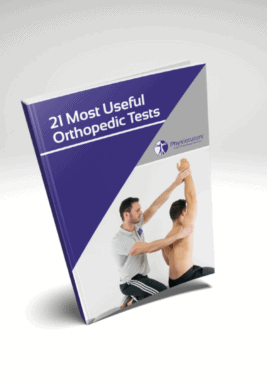Learn
Passive Lumbar Extension Test | Radiographic Lumbar Instability Assessment
Non-specific low back pain patients are very heterogeneous. Classifying them is thus necessary to provide adequate treatment. In the case of lumbar instability, the best available diagnostic value is a cluster of subjective and objective findings, which we discussed in another video.
Nonetheless, there are also physical tests, which can give an indication of lumbar spine instability, one of which is the passive lumbar extension test or PLET. According to Kasai et al (2006), it has a reported sensitivity of 84,2% and a specificity of 90.4%.
Ferrari et al. (2014) found less promising values with a sensitivity of 43% and a specificity of 86%, while Rabin et al. (2013) found a substantial inter-rater agreement with a Kappa value of 0.76. All in all, this test seems to be moderately useful in clinical practice.
For the test, the patient lies in prone position.
Then both legs are passively raised about 30 cm from the bench and then pulled gently.
If the patient experiences severe low back pain or if there is a feeling of heaviness on the lower back or a feeling as though the lower back were about to ‘come off’ the test is considered positive.
21 OF THE MOST USEFUL ORTHOPAEDIC TESTS IN CLINICAL PRACTICE

There are several other orthopedic tests for the diagnosis of radiographic lumbar instability:
References
Like what you’re learning?
BUY THE FULL PHYSIOTUTORS ASSESSMENT BOOK
- 600+ Pages e-Book
- Interactive Content (Direct Video Demonstration, PubMed articles)
- Statistical Values for all Special Tests from the latest research
- Available in 🇬🇧 🇩🇪 🇫🇷 🇪🇸 🇮🇹 🇵🇹 🇹🇷
- And much more!








